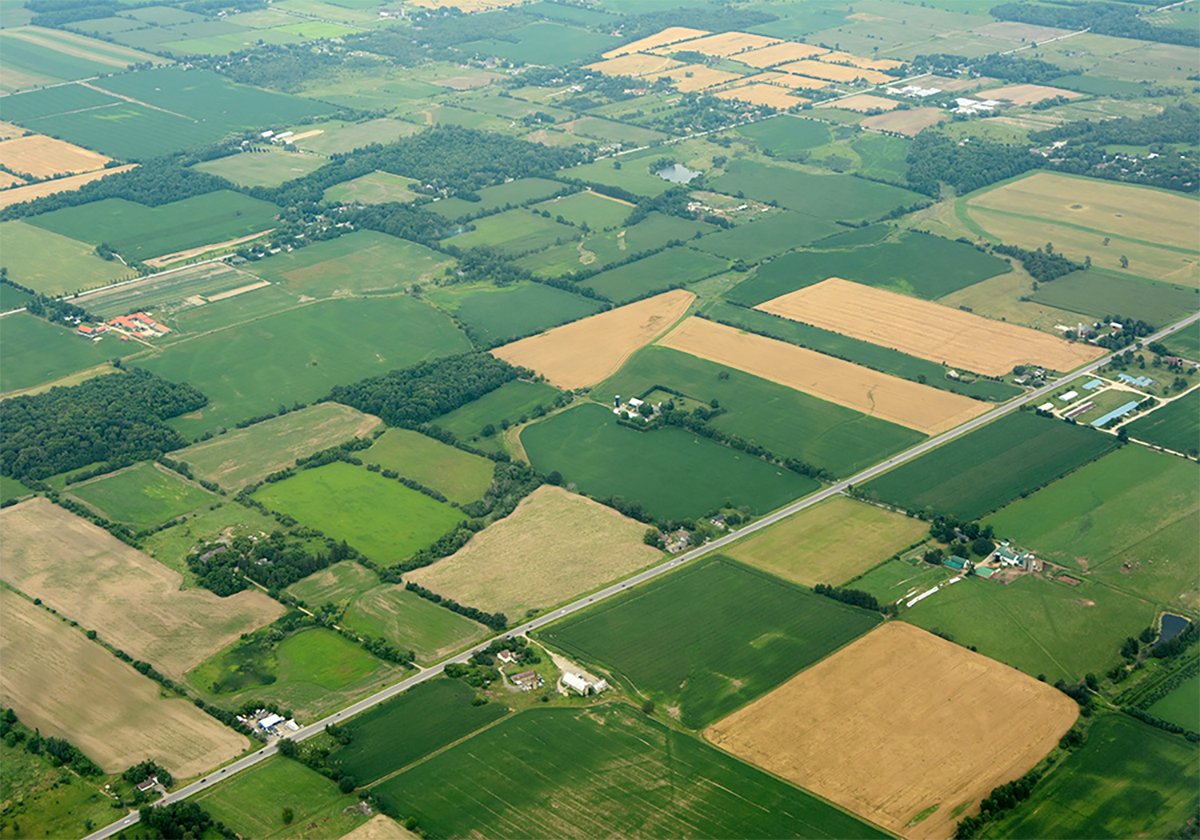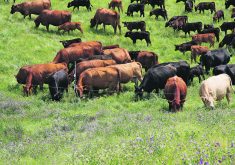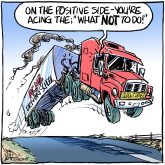Roundup response
Re: “Roundup back in Schmeiser’s fields,” Western Producer Oct. 27. I am continually amazed, but not surprised, at Monsanto’s attempts to completely misrepresent the facts.
The Supreme Court did not rule that my 1,030 acres of canola grown in 1998 was 95-98 percent Roundup tolerant. This was based on Monsanto’s own in-house testing. What Monsanto is saying, though, is they contaminated over 1,030 acres of my canola fields to some degree.
There was only one set of truly independent tests that was conducted on my canola; that of Dr. Rene Van Acker of the University of Manitoba. Dr. Van Acker’s tests showed contamination of Roundup Ready canola in my fields at levels from zero to eight percent, and the ditch along one field at 60 percent contamination.
Read Also

Higher farmland taxes for investors could solve two problems
The highest education and health care land tax would be for landlords, including investment companies, with no family ties to the land.
As was stated during trial, and not ruled out by any judge, this higher level of contamination indicates the canola must have come off a passing truck.
Monsanto’s lawyers and Trish Jordan have continuously stated that all a farmer has to do if his fields are contaminated with their GM canola is to notify them and they will come out immediately and remove the canola plants.
They never mention publicly that they also demand a release to be signed, in which the farmer gives up all of their rights.
After signing that release, the farmer, for the rest of his life, cannot take Monsanto to court for whatever reason, and agrees to a “gag-order” that he never speak about this to anyone.
When the volunteer canola showed up in September, I immediately contacted Monsanto. Two Monsanto investigators came to my farm and together we assessed the contamination and damage it had caused to my field.
Canola had not been grown on that field since 1999. Monsanto agreed to remove the canola plants by hand.
Nowhere did Monsanto’s investigators comment on “the amount or uniformity of the plants, or that it was flowering over 50 acres and that this was not consistent with pollen flow.”
This statement was made by Monsanto’s lawyer, who had never visited the field in question. …
Monsanto had agreed to remove their canola that was contaminating my fields and have failed to do so. In my opinion they have no respect for the property rights of farmers.
– Percy Schmeiser,
Bruno, Sask.
Creative thinkers
Barry Wilson’s last two columns, “The new assumption: agriculture not competitive,” and “Former trade negotiator sees hamstrung scenario,” point us to where we might find solutions to the dilemmas facing producers.
On Oct. 20 Mr. Wilson noted, “The government response so far seems piecemeal and uninspired. The new prescriptions for success seem limited. Where are the creative thinkers?”
On Oct. 27, Mr. Wilson noted, “Supply management leaders … refusing to budge or to let the government budge, … have painted negotiators into an impossible corner. …
“So what is supply management’s Plan B anyway?”
It seems to me that in both cases, the focus of actions by all parties was lost. The focus should have been to create a profitable environment for Canada’s agricultural producers.
The BSE crisis has shown us that keeping producers economically barely alive served to improve profitability of slaughterhouses, packers and processors. Beef producers continue to struggle. Consumers see little or no difference.
Trade rules generally enable trade much more than they hinder trade. Many traders thrive while in compliance with the rules. The key is then to find trade business models used by other successful industries and apply those models to create opportunities for producers – Plan B?
Simply fighting tariff battles might not help improve the economic viability of farmers. Producers must instead restructure their relationship with consumers to the advantage of both.
Canada has many creative thinkers. Let’s focus their efforts on creating business models that bring about that mutual advantage.
– Mike Klein,
Calgary, Alta.
Another giveaway?
In the Oct. 20 issue of the Western Producer, I was shocked and dismayed over the article “WTO plan praised, panned.”
In this article, the U.S. has tabled a proposal for future World Trade Organization talks which would “leave existing American farm subsidies largely intact, force Canada to cut farm spending and put in jeopardy the Canadian Wheat Board monopoly and supply management over-quota tariffs.”
What I found really shocking was the fact that “a number of Canadian officials praised the American move as an important impetus to get WTO talks moving again.” Have these officials learned nothing about U.S. tactics? Has the softwood lumber dispute taught them nothing about the one-sided bullying approach of the American government?
When will such decisions be removed from the hands of a few highly paid political officials who will never suffer the financial consequences of their actions, and put such decisions in the hands of the people who must live or die by it – namely the farmers?
To my way of thinking, president Bob Friesen of the Canadian Federation of Agriculture is the only one using a bit of common sense when he says “a good WTO deal is important for Canadian farmers. However, the U.S. proposal would not be a good deal.”
I really feel that if these “Canadian officials” go into the talks with the attitude they presently have, Canadian agriculture will be in for another rough ride.
– Don Bamber,
Oyen, Alta.
Why seed?
Every so often, articles appear in your newspaper promoting the benefits of biotechnology. In most cases, they imply that farmers are greatly benefiting from these advances in technology which result in increased production.
Let’s examine these ideas further. When a good crop of canola was 35 bushels per acre, a producer received approximately $8 per bu. His return per acre was $280.
Using new higher yielding varieties that are chemical specific, a good crop is 55 bu. per acre. The price a producer is now paid is approximately $5.25 per bu. Now his return per acre is $288.
At the same time the cost of inputs to grow the 55 bu. is very much higher than it was to produce the 35 bu. A producer is worse off with the 55 bu.
I agree that there are huge benefits created by research and improved technology, but someone other than the farmer is reaping all the increased benefits.
Using present day prices of inputs, I would have to grow 80 bu. per acre of barley, 50 bu. per acre of wheat and 35 bu. of canola just to make a very modest profit.
If conditions remain the same in spring 2006, I don’t know why anyone would want to seed a crop.
– Roger Brandl,
Fort St. John, B.C.
OT in north
I wanted to send this letter so people in northern Saskatchewan can realize the different treatment northern workers receive from our Saskatchewan government. … The regulations from the department of labour state that the overtime sections of the (labour) act do not apply for workers in northern Saskatchewan, specifically north of the 62nd townships.
The towns of La Ronge, Creighton and Uranium City are also exempt and those workers receive overtime at time and a half. The sections also say loggers do not qualify for overtime except if you work at the sawmill/plant or head office. Evidently, the workers of the northern forest do not qualify. It would be interesting to investigate the policies in other regions of the country …
Since northern Saskatchewan is a resource rich territory, and wants a future for our families and communities, I feel it is time we speak up for our rights as workers and ask our province to … pay northern workers what other workers take for granted – time and a half for overtime when we exceed eight hours per day or 40 hours per week. …
We must develop our resources and share our gifts … because responsibilities are balanced with powers. … The province of Saskatchewan … must take the responsibility and change their regulations and allow for northerners to receive overtime wages for overtime hours worked.
– Rick Laliberte,
Beauval, Sask.
Fire sale price
Fire sale grain prices, endless supply, come and get it. This is Canada’s message to the world.
The current situation on grain farms is a consequence of a lack of Canada’s adequate commitment and long-term vision to sustainable agriculture.
Canada’s governments worry that a guaranteed floor price on grains would cause overproduction of certain grains, distort the market and cost more than Canada can afford. What a narrow minded, nearsighted excuse for long-term sustainability in agriculture.
The truth is, Canada can afford the cost to reverse agriculture’s financial downward spiral, but politics and political gain stand in the way.
Give agricultural food producers the help they need, and the increased economic activity will nullify the ongoing cost.
Once the on-farm situation is addressed, invest in grain and cattle end-use projects that will help us get off the raw product giveaway that now exists.
– John Olinik,
Kelliher, Sask.
Video comment
The Saskatchewan Organic Directorate shares the concerns of two University of Manitoba researchers, that the U of M administration “does not want to anger Monsanto,” which as a result until recently, blocked the release of their video Seeds of Change, (“Film dispute raises censorship fears,” Western Producer, Sept. 22.)
The video, the culmination of research by Dr. Stephane McLachlan and graduate student Ian Mauro, documents farmer and public perceptions of the impact of the introduction of genetically modified crops.
In a letter to the U of M, stating that it appeared academic freedom was being infringed upon, the Organic Agriculture Protection Fund committee of SOD urged the U of M administration to allow the film’s release.
The letter also expressed that as servants of the public good, it is the responsibility and indeed the mandate of universities to allow research on issues of public interest to be freely accessible by the public.
The OAPF committee is of the view that this unfortunate situation arose as an example of faulty government and administrative thinking, which is attempting to turn universities into self sustaining, revenue generating centres of commerce rather than publicly funded institutions of inquiry and learning.
University’s traditional role appears to be compromised by this shift in philosophy and by the resulting over participation and influence of private-for-profit entities.
Canadians should be angry.
Apparently yielding to public pressure, the U of M administration has now ended its three-year suppression of the film, and the filmmakers are launching a national tour in November.
Allowing the distribution of Seeds of Change will go at least some way in proving the university is not so beholden to corporate interests.
– Doug Bone,
Secretary, SOD Organic
Agriculture Protection Fund,
Elrose, Sask.
Who owns?
Who owns Big Sky farms? The 16-page, first edition of The Big Sky Bugle did not make that clear.
The Fraser Institute classifies Big Sky Farms as a Saskatchewan crown corporation.
The (Canadian) Taxpayers Federation criticized the huge government investment in Big Sky Farms.
Richard Truscott, writing for the federation, said it best: “At least for once the pigs at the trough are real pigs.”
Saskatchewan Business magazine lists the owners of Big Sky Farms as Crown Investment Corporation, Crown Capital and others.
That “others” list appears to include Saskatchewan Government Growth Fund I, SGGF II and the Saskatchewan Opportunities Corporation.
In fact, it is unclear if there is any significant investment in Big Sky that does not come from government or government related funds. There are some minor investors and there are questions about how their investments were made.
Does anyone know whether the government has guaranteed any Big Sky loans?
Is there a good reason for our government to invest in one farm when most independent family farms are struggling to survive?
Have independent hog farmers paid taxes to subsidize their competition? Even large corporate farms like Quadra, financed with venture capital, cannot compete in a business environment where one player has access to tax dollars for growth capital.
Remember when SPI was a single desk seller marketing hogs for 12,000 Saskatchewan farmers who were producing hogs? There is no more single desk selling but SPI is still going strong. It promotes itself as “a full service hog marketing agency dedicated to maximizing returns for pork producers across the Canadian prairies.”
Saskatchewan Business lists SPI in its top 100 companies. The major shareholder? Big Sky Farms.
There are countries in the world where state-owned farms are the norm and farmers are peasants working for the government.
These countries do not pretend to operate in a free market economy and they call their form of government communism.
Surely in this country we still believe in the private ownership of farms.
In fact, The Big Sky Bugle states that the company has built its success on a foundation that includes “the wonderful people who carry on the entrepreneurial spirit of our forefathers.”
So who owns Big Sky Farms? Perhaps we’ll find out in the second edition of The Big Sky Bugle.
– Elaine Regier,
Laird, Sask.














